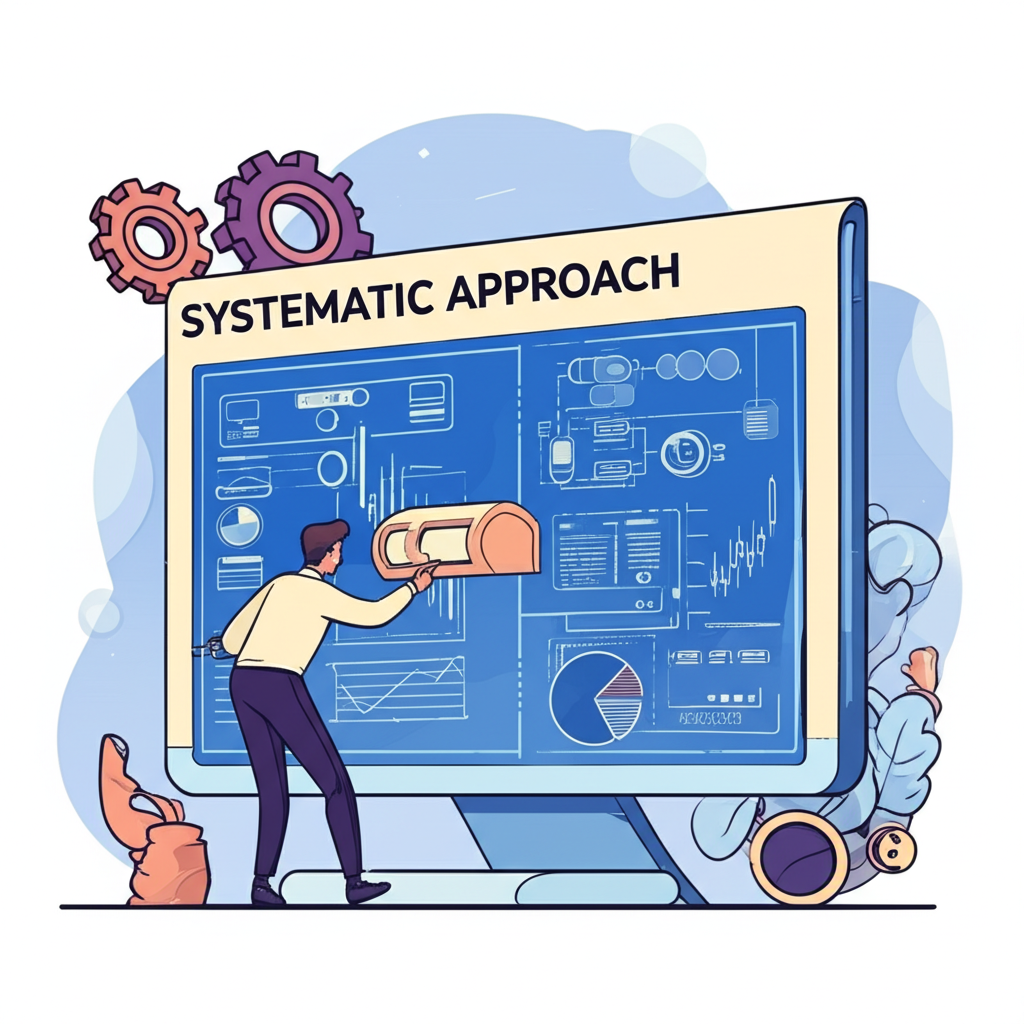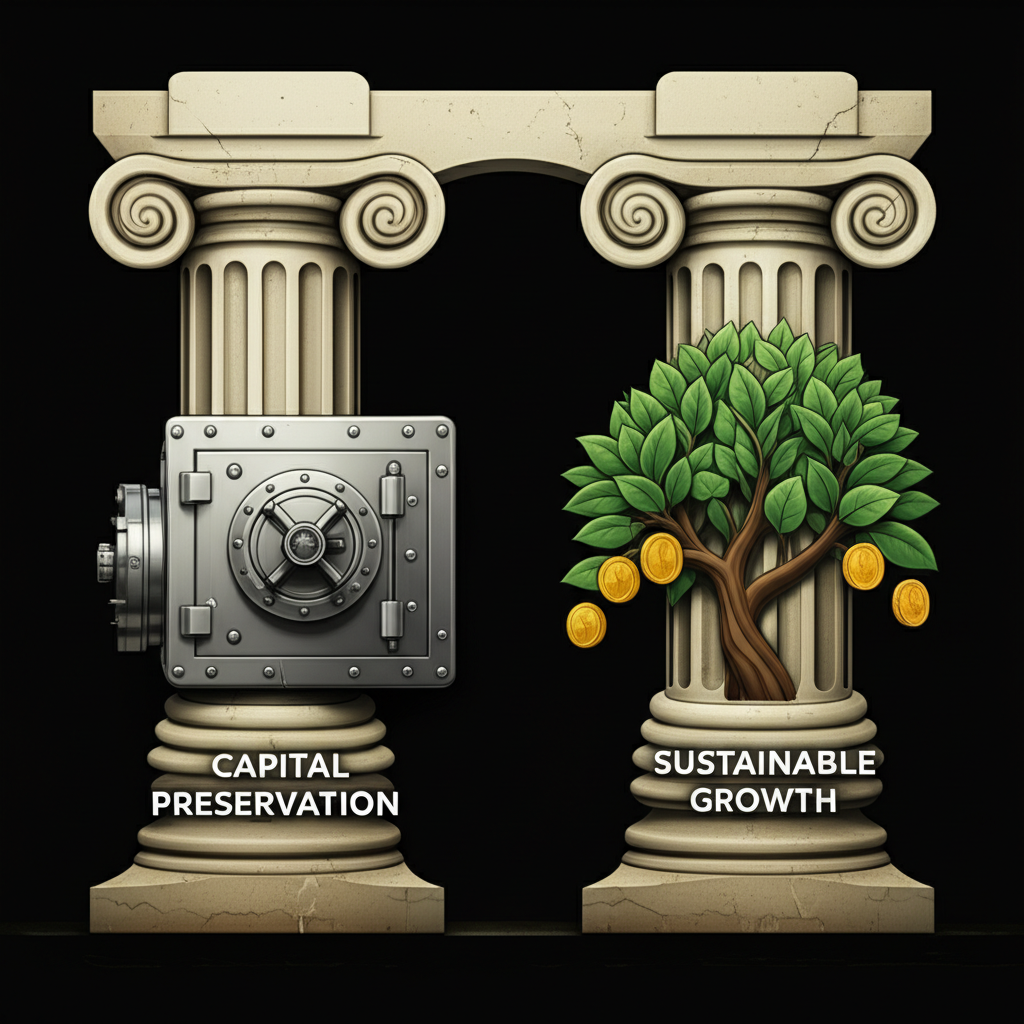Introduction: Why Risk Management is Non-Negotiable in Trading

Trading is not a game of chance—it’s a discipline where preparation separates success from failure. Behind every headline of overnight gains lies the quieter, more enduring truth: long-term survival in financial markets depends on how well you manage risk. The lure of high returns can be intoxicating, but the reality is that without a structured approach to controlling losses, even the most promising strategies can collapse under pressure. This is where risk management becomes indispensable. It’s not an afterthought or a safety net reserved for downturns—it’s the core operating system of every consistent trader. By identifying, assessing, and mitigating financial exposure, risk management enables traders to protect their capital, maintain emotional stability, and create conditions for compounding gains over time. In this guide, we’ll break down the principles, tools, and mindset shifts that transform risk from a threat into a strategic advantage.
What Exactly is Risk Management in Trading?

At its heart, risk management in trading is a disciplined process of navigating uncertainty. Markets don’t move in straight lines—prices fluctuate due to countless variables, from economic data to geopolitical tensions. Risk management provides a framework to assess how much you could lose on any given trade and how likely that loss is, allowing you to make informed decisions rather than reacting emotionally to market swings. It’s not about avoiding risk altogether—that’s impossible in any form of investing—but about controlling it so that no single trade jeopardizes your entire account. Think of it as the difference between gambling and strategy: one relies on luck, the other on planning. A well-executed risk management plan turns trading into a repeatable process, where consistency matters more than heroics. Over time, this approach builds resilience, enabling traders to stay in the game through both wins and losses.
The Core Pillars: Capital Preservation and Sustainable Growth

Every successful trading career rests on two foundational goals: preserving capital and achieving sustainable growth. These aren’t competing priorities—they’re mutually reinforcing. **Capital preservation** comes first because without money to trade, skill becomes irrelevant. Effective risk controls ensure that a string of losing trades won’t wipe out months of progress. This doesn’t mean avoiding all losses; it means ensuring they’re small enough to recover from. When traders protect their accounts from catastrophic drawdowns, they remain active participants in the market, ready to capitalize on the next opportunity.
From this foundation, **sustainable growth** naturally follows. By limiting downside risk, traders create a stable environment where profits can compound. A series of well-managed trades—some winning, some losing—can still result in net gains if the winners are larger than the losers and the losses are controlled. This steady, incremental approach stands in contrast to the boom-and-bust cycle that plagues undisciplined traders. The goal isn’t to get rich quickly, but to stay in the game long enough for skill and consistency to deliver results.
Understanding the Types of Risk in Trading

To manage risk effectively, you must first recognize its many forms. Trading exposes you to more than just price changes—it involves operational, psychological, and systemic challenges that can undermine even the best-laid plans. Understanding these categories allows you to build targeted defenses rather than relying on vague intentions.
Market Risk: Volatility, Liquidity, and Systematic Events
Market risk is the most visible type—the danger that price movements will go against your position. It breaks down into several key components:
* **Volatility Risk:** Sudden, sharp price swings can trigger stop-losses prematurely or create slippage during entry and exit. High volatility isn’t inherently bad, but it increases unpredictability. Traders who fail to adjust their position sizes or stop-loss levels during volatile periods often suffer outsized losses.
* **Liquidity Risk:** In thinly traded markets, it may be difficult to exit a position at your desired price. For example, a stock with low daily volume might require accepting a significantly worse price to close quickly, especially during news events. This gap between expected and actual execution price can erode profits or deepen losses.
* **Systematic Risk:** Also known as market-wide or macro risk, this refers to forces that affect entire markets—economic recessions, interest rate shifts, or global crises. Diversification won’t eliminate this risk, but understanding its influence helps traders adjust exposure during uncertain times.
Operational Risk: Execution, Technology, and Human Error
Even with perfect analysis, things can go wrong behind the scenes. Operational risk stems from failures in process, technology, or human judgment:
* **Execution Errors:** Simple mistakes like entering 1000 shares instead of 100, or buying the wrong ticker symbol, happen more often than traders admit. These errors can turn a potentially profitable setup into an instant loss.
* **Technology Failures:** Internet outages, platform crashes, or delayed data feeds can prevent timely entries or exits. In fast-moving markets, even a few seconds of downtime can be costly. Using reliable infrastructure and having backup systems—like mobile access or secondary brokers—can mitigate this risk.
* **Human Error:** Fatigue, distraction, or overconfidence can cloud decision-making. A trader working long hours without breaks may misread chart patterns or ignore warning signals. Building routines that include rest and review helps reduce cognitive load and improve accuracy.
Psychological Risk: Emotions, Discipline, and Overtrading
Perhaps the most underestimated threat comes from within. Psychological risk refers to the emotional impulses that sabotage rational trading:
* **Fear and Greed:** Fear can cause traders to exit winning positions too early or hold losing ones too long, hoping for a turnaround. Greed drives overtrading, chasing hot tips, or increasing position size recklessly in pursuit of bigger returns.
* **Revenge Trading:** After a loss, some traders feel compelled to “get back” what they lost immediately, entering new trades without proper analysis. This emotional reaction often leads to deeper losses.
* **Lack of Discipline:** Sticking to a plan is hard when markets are moving fast. Yet, as highlighted by research from the Financial Industry Regulatory Authority (FINRA), many day traders lose money not because their strategies are flawed, but because they abandon them under pressure. Consistency beats brilliance in the long run.
Essential Risk Management Strategies Every Trader Must Know
Knowing the risks is only half the battle. The real value lies in implementing proven strategies that protect your capital and support consistent performance. These aren’t theoretical concepts—they’re practical tools used by professional traders every day.
Position Sizing: The Foundation of Risk Control
Position sizing is the single most powerful lever in risk management. It determines how much of your capital you allocate to each trade based on your risk tolerance and the specific setup.
* **The 1% Rule and 2% Rule:** A widely adopted guideline is to risk no more than 1% or 2% of your total account balance on any single trade. For instance, with a $20,000 account, risking 1% means your maximum loss per trade is $200. This constraint ensures that a losing streak won’t devastate your portfolio. The question “What is the 1% rule in trading?” often arises among beginners, but experienced traders apply it religiously.
* To calculate your position size: First, determine the dollar amount you’re willing to risk (e.g., 1% of capital). Then, divide that by the difference between your entry price and stop-loss level. The result is the number of shares, contracts, or lots you should take.
This method links directly to concepts like “2% risk management in forex,” where leverage makes prudent sizing even more critical.
Stop-Loss Orders: Your Safety Net
A stop-loss order automatically closes a losing position when the price hits a predetermined level. It’s not a sign of weakness—it’s a sign of discipline.
* **Purpose:** Without a stop-loss, small losses can snowball into account-threatening drawdowns. A stop-loss removes emotion from the equation and enforces pre-defined risk parameters.
* **Types:**
* **Hard Stop:** A fixed price level that triggers an exit regardless of market conditions.
* **Trailing Stop:** Adjusts upward as the price moves in your favor, locking in profits while still protecting against reversals.
* **Best Practices:** Place stop-losses based on technical levels—such as below support or above resistance—or using volatility indicators like the Average True Range (ATR). Avoid placing them at round numbers where other traders may cluster, increasing the chance of being stopped out by short-term noise.
Diversification: Spreading Your Bets Wisely
Putting all your capital into one asset or sector is a recipe for disaster. Diversification reduces concentration risk by spreading exposure across multiple areas:
* **Across Asset Classes:** Combine stocks, bonds, commodities, or currencies to balance performance across different market cycles.
* **Across Sectors:** Avoid overexposure to a single industry—tech stocks might surge while energy lags, and vice versa.
* **Geographic Exposure:** International markets often move independently of domestic ones, offering additional diversification benefits.
* **Strategy Diversification:** Use a mix of long-term investing, swing trading, and short-term tactics to smooth out returns.
Diversification doesn’t guarantee profits, but it reduces the impact of any single failure.
Risk-Reward Ratio: Balancing Potential Gains and Losses
The risk-reward ratio measures how much you stand to gain relative to how much you’re risking. It’s calculated by dividing your potential profit (from entry to target) by your potential loss (from entry to stop-loss).
* **Calculation and Use:** A 1:3 ratio means you risk $1 to make $3. Traders aim for positive ratios—1:2, 1:3, or higher—so that even with a win rate below 50%, they can remain profitable over time. For example, winning 40% of trades with a 1:3 ratio still yields a net gain. This mathematical edge is what separates consistent performers from gamblers.
Leverage Management: A Double-Edged Sword
Leverage allows you to control large positions with minimal capital, amplifying both gains and losses. In markets like forex, where 50:1 or 100:1 leverage is available, the temptation to overuse it is strong.
* **Caution:** High leverage can lead to margin calls and rapid account depletion, especially during volatile moves. A small adverse move can wipe out equity if positions are too large.
* **Best Practices:** Use leverage conservatively. Start with lower multiples and increase only as your track record and confidence grow. Always calculate your maximum exposure before entering a leveraged trade.
Building Your Personalized Risk Management Plan: An Actionable Framework
A generic approach won’t work in the long run. Markets change, and so do personal circumstances. A personalized risk management plan adapts to your unique goals, psychology, and experience level.
Step 1: Define Your Risk Tolerance and Trading Goals
Before placing any trade, ask yourself: How much am I comfortable losing on a single trade? What’s my emotional breaking point? Are my goals short-term income or long-term wealth building?
* **Assessment:** Be honest about your financial situation, emotional resilience, and time horizon. A retiree using trading to supplement income has a different risk profile than a young investor with a 30-year outlook.
* **Goal Alignment:** Match your risk appetite to your objectives. Aggressive strategies may suit those seeking rapid growth, but they require strong nerves and deep pockets to withstand drawdowns.
Step 2: Establish Your Rules (Entry, Exit, Position Sizing)
A plan without rules is just a wish. Codify your strategy into clear, measurable guidelines:
* **Entry Rules:** Define exactly what triggers a trade—specific chart patterns, indicator crossovers, or fundamental signals.
* **Exit Rules:** Predefine profit targets and stop-loss levels. Never enter a trade without knowing where you’ll exit.
* **Position Sizing:** Apply a consistent rule—like the 1% model—to every trade, regardless of confidence level. Overconfidence is one of the most dangerous biases in trading.
Step 3: Implement Psychological Safeguards
Even the best plan fails if emotions take over. Build habits that reinforce discipline:
* **Trading Journal:** Record every trade—your rationale, emotions, and outcome. Review it weekly to spot patterns and correct mistakes.
* **Pre-Trade Checklist:** Use a checklist to verify that every condition is met before execution. This reduces impulsive entries.
* **Scheduled Breaks:** Step away after wins or losses. Emotional fatigue clouds judgment.
* **Mindfulness Practices:** Techniques like meditation improve focus and emotional regulation, helping you stay calm during market turbulence.
Step 4: Regular Review and Adaptation
Markets evolve. A strategy that works in a bull market may fail in a sideways or bearish environment. Your plan should evolve too.
* **Periodic Review:** Set recurring reviews—weekly for performance tracking, monthly for deeper analysis. Assess adherence, win rate, average risk-reward, and drawdowns.
* **Adaptation:** Adjust stop-loss methods, position sizing, or sector exposure based on performance data and changing market conditions. Flexibility within a disciplined framework is key to longevity.
The Intersection of Risk Management and Money Management
While often used interchangeably, **risk management** and **money management** serve different but complementary roles.
* **Risk Management** focuses on individual trades: How much are you risking per position? Where is your stop-loss? This layer protects against single-trade disasters.
* **Money Management** looks at the bigger picture: How much of your total capital is deployed at once? How are funds allocated across strategies or asset classes? It ensures your overall portfolio remains balanced and resilient.
For example, the 1% rule (risk management) limits loss per trade, while money management might cap total exposure at 10% across all open positions. Together, they create a robust defense system that supports sustainable growth.
Common Mistakes in Risk Management and How to Avoid Them
Even seasoned traders make errors when discipline slips. Recognizing these pitfalls is the first step to avoiding them.
* **Moving Stop-Losses:** Extending a stop-loss to avoid a loss turns a small hit into a major one. *Solution: Set it based on logic, not emotion. Stick to it.*
* **Over-Leveraging:** Using excessive leverage to chase returns. *Solution: Understand margin requirements and use leverage sparingly.*
* **Revenge Trading:** Jumping into a new trade after a loss to “make it back.” *Solution: Pause, reflect, and reset.*
* **No Plan:** Entering trades without rules. *Solution: Develop a written trading plan and follow it.*
* **Inconsistent Sizing:** Betting big on “sure things.” *Solution: Apply the same sizing rule to every trade.*
* **Ignoring Psychology:** Believing you’re immune to bias. *Solution: Acknowledge emotional triggers and build safeguards.* As shown in a Journal of Economic Psychology study, cognitive biases significantly influence financial decisions—awareness is half the battle.
Conclusion: The Path to Sustainable Trading Success
Risk management isn’t a set of restrictions—it’s the framework that makes freedom possible in the markets. It’s what allows traders to act with confidence, knowing they won’t be wiped out by a single mistake. By understanding the types of risk, applying proven strategies like position sizing and stop-losses, and building a personalized plan that evolves over time, you create the conditions for long-term success. The goal isn’t perfection—it’s survival, consistency, and compounding. Markets reward those who stay in the game. Embrace risk management not as a burden, but as your most reliable tool for navigating uncertainty and turning skill into sustainable results.
Frequently Asked Questions (FAQs)
What is the 1% rule in trading and how is it applied?
The 1% rule in trading is a risk management guideline suggesting that a trader should risk no more than 1% of their total trading capital on any single trade. To apply it, first determine 1% of your account balance. Then, calculate the distance from your entry price to your stop-loss price. Divide your maximum allowed risk (1% of your capital) by this stop-loss distance to determine the appropriate position size for that trade. For example, with a $10,000 account, you’d risk $100 per trade. If your stop-loss implies a $10 loss per share, you’d buy 10 shares ($100 / $10).
What are the four main types of risk management strategies for traders?
While many strategies exist, four fundamental types include:
- Position Sizing: Determining the appropriate quantity of an asset to trade based on risk tolerance and capital.
- Stop-Loss Orders: Pre-setting a price level at which a trade will automatically close to limit potential losses.
- Diversification: Spreading investments across different assets, markets, or strategies to mitigate exposure to a single risk.
- Risk-Reward Ratio: Evaluating trade opportunities by comparing potential profit to potential loss, aiming for favorable ratios.
How do I calculate my risk per trade using position sizing?
To calculate risk per trade:
- Determine your total trading capital.
- Decide on your maximum risk percentage per trade (e.g., 1% or 2%).
- Calculate the monetary value of your maximum risk: Total Capital × Risk Percentage.
- Identify your stop-loss level for the specific trade and calculate the difference between your entry price and your stop-loss price (this is your risk per unit/share/lot).
- Divide your maximum monetary risk by the risk per unit to get your position size (number of units).
Why is psychological discipline critical for effective risk management in trading?
Psychological discipline is critical because emotions like fear, greed, hope, and revenge can easily override a well-designed risk management plan. A lack of discipline can lead to moving stop-losses, overtrading, taking impulsive trades, or deviating from a trading plan, all of which undermine risk control and lead to avoidable losses. Maintaining discipline ensures consistent application of rules, regardless of market volatility or individual trade outcomes.
What’s the difference between risk management and money management in trading?
While related, they have distinct focuses:
- Risk Management: Primarily concerned with controlling the potential loss on individual trades. It dictates factors like stop-loss placement and position sizing to protect capital from adverse price movements in specific positions.
- Money Management: Focuses on the broader allocation of capital across your entire trading portfolio. It addresses how much total capital to commit to trading, how many open positions to have, and how to allocate funds across different assets or strategies to optimize overall portfolio growth and stability.
Can risk management guarantee profits in trading?
No, risk management cannot guarantee profits in trading. Its primary purpose is to protect your capital and ensure that losses are controlled and manageable. While effective risk management significantly increases the *probability* of long-term profitability by preventing catastrophic losses and allowing winning strategies to play out, it does not eliminate the inherent uncertainty of the markets or guarantee any specific returns.
What are common mistakes traders make regarding risk management?
Common mistakes include:
- Moving stop-losses further away.
- Over-leveraging their accounts.
- Engaging in revenge trading after a loss.
- Trading without a predefined plan.
- Inconsistent position sizing.
- Ignoring the psychological aspects of trading.
- Risking too much capital on a single trade.
How often should I review and adjust my trading risk management plan?
Your risk management plan should be reviewed and adjusted regularly. A good practice is to do a quick review weekly or after any significant trading session, and a more comprehensive review monthly or quarterly. Adjustments should be made in response to significant changes in market conditions (e.g., increased volatility), changes in your personal financial situation, or consistent underperformance that suggests your current plan isn’t effective.
What is the role of a stop-loss order in a risk management strategy?
A stop-loss order is a critical component of risk management, acting as a predefined exit point for a trade if the market moves against your position. Its role is to:
- Limit potential losses: Prevents small losses from escalating into large, account-damaging ones.
- Remove emotion: Automates the exit process, preventing emotional decisions (like holding onto a losing trade hoping for a reversal).
- Define risk: Helps in calculating position size by clearly defining the maximum loss per trade.
Is risk management in forex different from other markets?
The fundamental principles of risk management (position sizing, stop-losses, risk-reward ratios) remain consistent across all financial markets, including forex. However, the application might differ due to market-specific characteristics:
- Leverage: Forex typically offers higher leverage, making disciplined leverage management even more critical.
- Volatility: Currency pairs can exhibit unique volatility patterns that influence stop-loss placement.
- Market Hours: Forex trades 24/5, which requires continuous monitoring or robust automated risk tools.
- Economic Data: Forex is heavily influenced by macroeconomic news, requiring traders to be aware of high-impact events.
While the tools are the same, the context requires specific attention to these nuances.

留言